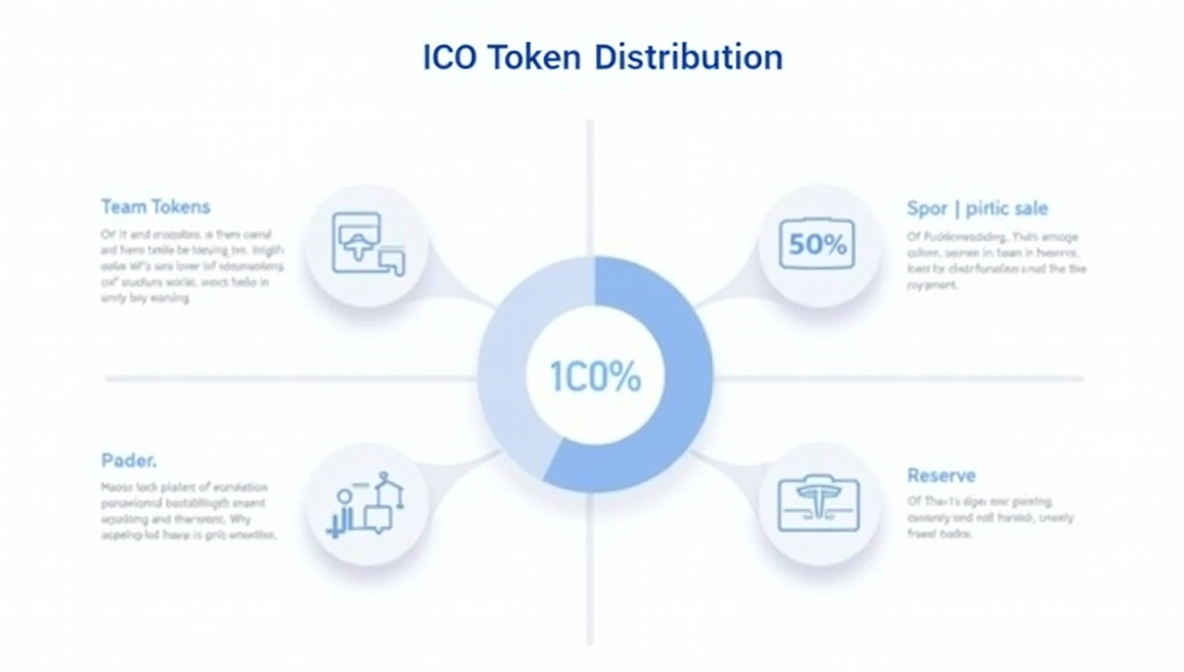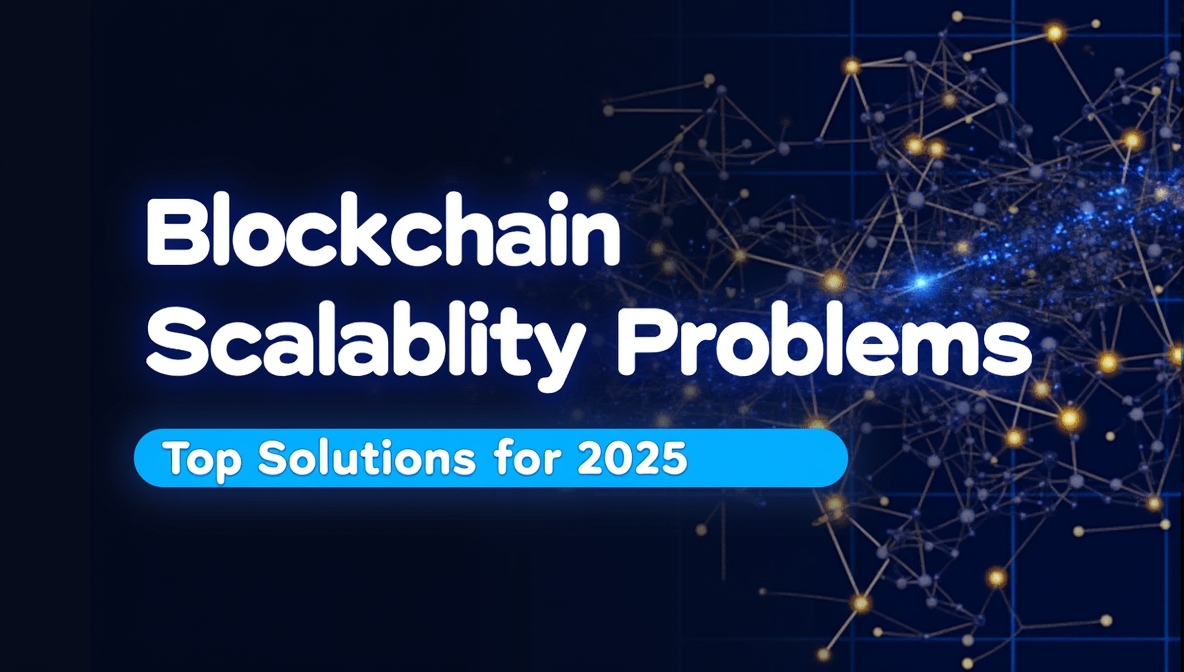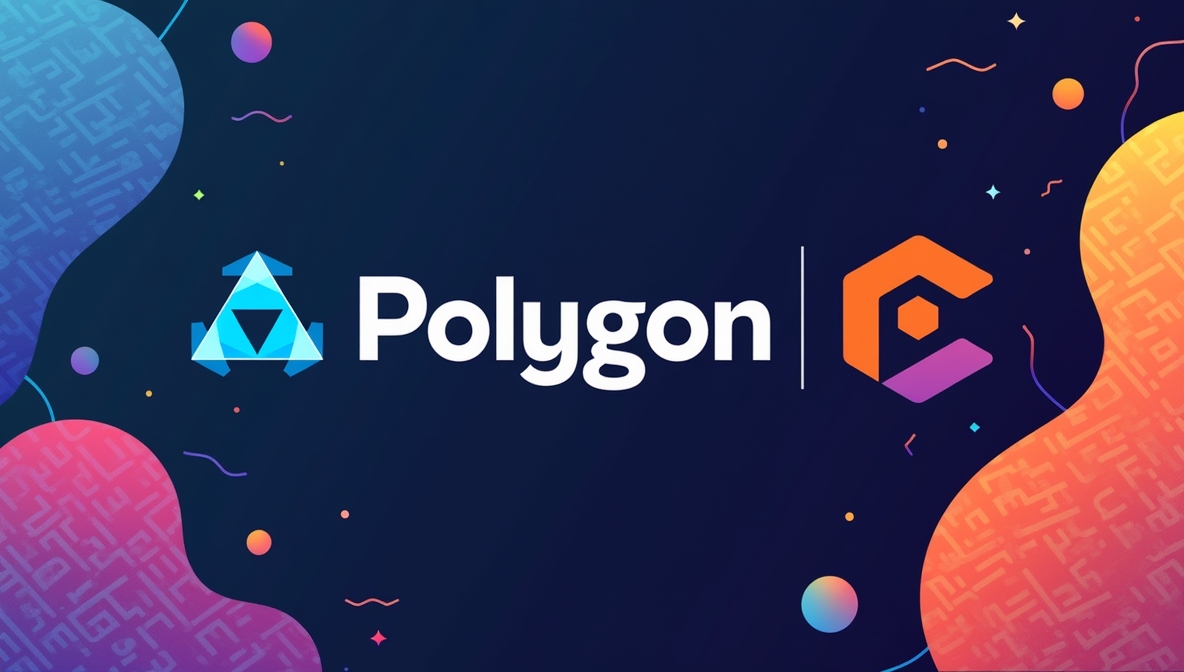Decentralization is reshaping business management by distributing decision-making and resources more efficiently. This transformation is especially evident in security tokens, which are revolutionizing traditional financial models. By harnessing decentralized systems and innovative technologies, organizations can achieve unprecedented agility, transparency, and economic efficiency.
This article explores the economic foundations of decentralization, practical benefits, implementation strategies, and future trends—with a special focus on how security tokens are redefining asset ownership and financial operations.
The Economic Fundamentals of Decentralization
Decentralization is fundamentally about redistributing power within an organization so that decision-making and resource allocation occur closer to the point of need. This approach leverages local insights to reduce inefficiencies and enhance productivity. Before diving into the various dimensions of decentralization, it is important to understand its economic underpinnings and how it serves as a catalyst for increased efficiency and innovation.
Read More: Asset Tokenization Trends: Transforming the Financial Landscape
Defining Decentralization: More Than Organizational Structure
Decentralization in business refers to the systematic delegation of decision-making authority, operational control, and resource allocation away from centralized hierarchies to distributed units, teams, or individuals. Unlike traditional top-down models, decentralized systems prioritize local autonomy, enabling faster responses to market dynamics and customer needs. From an economic perspective, decentralization aligns with the principle of subsidiarity—decisions should be made at the lowest effective level to minimize transaction costs and maximize allocative efficiency.
Decentralization manifests across multiple dimensions within organizations. Authority decentralization distributes decision-making power throughout organizational levels, enabling frontline employees to make critical operational decisions. Functional decentralization creates autonomous business units with control over specific organizational functions. Geographic decentralization disperses operations across different locations, each with substantial autonomy. Process decentralization shifts control of business processes from central units to distributed teams, reducing bottlenecks and enhancing agility.
The Economic Case for Decentralization
According to OECD research, there is a significant positive relationship between decentralization and economic activity. A 10% increase in decentralization ratios (spending or tax revenue shares) is associated with a 0.3% higher GDP per capita on average. This economic benefit stems primarily from productivity and human capital improvements, while capital investment appears to have less economic effect. This suggests that decentralization’s economic value derives more from how it enables better use of existing resources than from stimulating additional investment.
The relationship between decentralization and GDP is non-linear, with diminishing returns in highly decentralized contexts. For highly centralized economies, even modest shifts toward decentralization can yield significant economic improvements. However, there isn’t a one-size-fits-all degree of decentralization, meaning each organization must balance centralized control and local autonomy based on its unique objectives.
Practical Economic Benefits of Decentralization
Before exploring specific advantages, it is crucial to recognize that decentralization not only reassigns power but also creates tangible economic benefits. By enabling localized decision-making and tailored responses, organizations can improve efficiency, reduce delays, and foster innovation that drives competitive advantage.

Enhanced Allocative Efficiency
Decentralized models enable decision-making at the point of information origin. Local managers, with their intimate understanding of regional market conditions, can allocate resources more effectively than distant executives. This proximity reduces information asymmetry, resulting in more precise and effective resource deployment.
For example, decentralized logistics networks allow local teams to optimize operations in real time. When decisions are made close to the market, adjustments can be implemented swiftly to meet customer demands, ultimately reducing waste and improving overall efficiency.
Reduced Opportunity Costs Through Agility
Agility is one of the most significant advantages of decentralization. By empowering frontline employees to make decisions, organizations can drastically reduce the delays associated with hierarchical approval processes. This rapid response minimizes opportunity costs when market conditions shift unexpectedly.
A notable example is found in the ride-sharing industry, where companies leverage artificial intelligence to decentralize route optimization. Careem’s AI-driven logistics system enables real-time adjustments that drastically cut delivery times and improve operational responsiveness.
Competitive Pressure for Efficiency
Decentralization creates an environment of internal competition by holding various units accountable for their performance. This internal competition fosters continuous improvement and innovation as teams strive to deliver better results compared to their peers.
The economic theory behind this approach suggests that competition—whether external or internal—motivates entities to optimize resource use and boost productivity. In decentralized organizations, performance metrics are closely tied to local achievements, inspiring teams to continuously refine their processes and contribute to overall business success.
Implementation Strategies for Effective Decentralization
Implementing decentralization successfully requires careful planning and a clear understanding of an organization’s strengths and challenges. The following strategies outline how organizations can transition to decentralized structures while maintaining alignment with overall strategic goals.
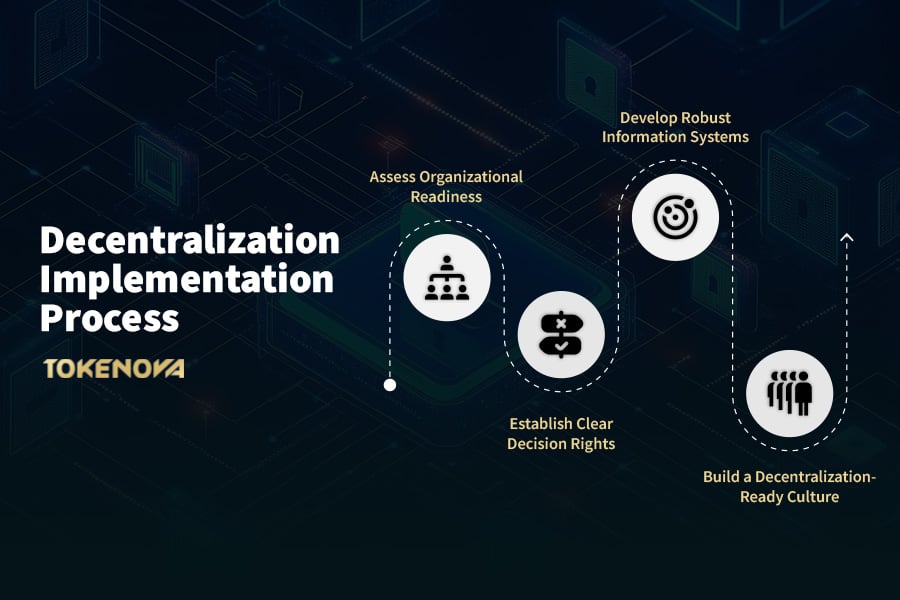
Assessing Organizational Readiness
Before embarking on decentralization, organizations must evaluate their current structure, culture, and technological capabilities. A comprehensive cost-benefit analysis helps determine which functions can benefit most from being decentralized. For instance, a Ukrainian agro-firm managed to reduce overheads by 18% by decentralizing its procurement processes to local cooperatives. This example demonstrates the significant efficiency gains that can be achieved with a targeted decentralization strategy.
Establishing Clear Decision Rights
One of the most critical components of a successful decentralization strategy is the clear delineation of decision rights. Without a well-defined framework, decentralized decision-making can lead to confusion and inefficiencies. Organizations need to specify which decisions remain centralized and which can be made locally, ensuring that all levels of the organization understand their responsibilities.
The O2 Model used at Target Teal is a strong example of how clear decision rights can support decentralization. By assigning dynamic roles and clear accountability, the model prevents overlap and ensures that decentralized actions are aligned with the overall corporate strategy.
Developing Robust Information Systems
Decentralization thrives on the availability of accurate, real-time data. Therefore, robust digital infrastructures—such as cloud-based collaboration tools and integrated data platforms—are essential for supporting decentralized operations. These systems ensure that every decentralized unit has access to the same quality of information, which is vital for making informed decisions.
Blockchain technology is a prime example of an enabling infrastructure. It offers a secure, transparent ledger system that can support distributed decision-making processes. The evolution of security tokens—which are built on blockchain—demonstrates how modern digital systems can underpin decentralized financial operations and asset management.
Read More: Blockchain Governance: Building Trust and Transparency
Building a Decentralization-Ready Culture
A successful decentralization initiative requires more than just technology; it demands a cultural shift within the organization. Developing a culture that values autonomy, accountability, and continuous learning is critical to empowering employees at all levels. Regular feedback loops, transparent KPIs, and trust-building initiatives help create an environment where decentralized decision-making can thrive.
For example, Dutch land reclamation projects have demonstrated success by integrating decentralized decision-making with high-trust practices. By investing in training programs that enhance decision-making skills and data literacy, organizations can ensure that their workforce is ready to embrace decentralized processes.
Economic Challenges and Considerations
Transitioning to decentralization can bring about significant benefits, but it also presents challenges that need to be carefully managed. This section explores the potential pitfalls associated with decentralization and offers insights on how to mitigate them effectively.
Coordination Costs and Fragmentation Risks
As decision-making spreads across multiple units, aligning these efforts with the overall strategic vision can become complex. Additionally, there is a risk of fragmentation, where the benefits of local autonomy are overshadowed by a lack of cohesive direction.
Organizations must implement strong communication channels and coordination mechanisms to overcome these challenges. Regular interdepartmental meetings, shared dashboards, and clear guidelines can help synchronize the efforts of decentralized units, ensuring they work together toward common objectives.
Scale Economies and Duplication Concerns
Decentralization can sometimes undermine the benefits of economies of scale. When individual units operate independently, opportunities for consolidated purchasing, standardized processes, or centralized service functions may be lost. This is particularly relevant in capital-intensive industries where scale is crucial for maintaining competitive advantages.
Organizations need to carefully analyze which functions are better served by centralization versus decentralization. For instance, while research and development in aerospace may require central oversight to leverage scale economies, many service industries benefit more from the flexibility and localized focus provided by decentralization.
Equity and Consistency Challenges
Decentralized models often lead to variations in service quality and operational practices across different units. Although local adaptation is valuable, it must be balanced with the need for consistency in customer experience and brand integrity. Inconsistencies can lead to confusion and erode customer trust if not properly managed.
Franchise models offer a useful example by standardizing core processes while allowing local customization in marketing and service delivery. By clearly delineating which aspects of the operation must remain uniform and which can be adapted locally, organizations can reap the benefits of decentralization without compromising on quality or equity.
Balancing Centralization and Decentralization
Striking the right balance between centralization and decentralization is crucial for maximizing organizational performance. This section provides insights into how organizations can blend both approaches to leverage their unique advantages while mitigating potential downsides.
Before exploring the different functions suited for either centralized or decentralized management, it’s important to understand that effective business models often integrate both approaches. The key is to identify which areas benefit from centralized control for consistency and which thrive under the flexibility of decentralized decision-making.
Centralization Versus Decentralization: A Comparative View
The table below offers a clear comparison of the key differences between centralized and decentralized business models:
| Aspect | Centralized Model | Decentralized Model |
| Decision Making | Central authority; slower response time | Distributed decision-making; faster, local responses |
| Resource Allocation | Standardized processes, economies of scale | Adaptive allocation; minimizes information asymmetry |
| Innovation | Limited by bureaucracy | Fosters internal competition and rapid innovation |
| Coordination | Easier to control uniformly | Requires robust systems to mitigate fragmentation risks |
| Risk Management | Concentrated control, potential vulnerabilities | Diversified risk; agile and responsive |
This comparative framework demonstrates that while centralization provides consistency and scale, decentralization offers the agility needed in today’s fast-changing business environment.
Functions Best Suited for Centralization
Certain functions benefit significantly from centralized management due to the need for uniformity, strategic oversight, or scale. For instance, strategic planning, brand management, core technology infrastructure, and major capital investments are areas where centralized control helps maintain consistency and safeguard the organization’s long-term vision. By keeping these elements centralized, companies can ensure that their overall direction remains coherent while still empowering local units to manage day-to-day operations.
Functions Best Suited for Decentralization
Conversely, many business functions thrive under decentralized management. Areas such as customer service, product innovation, local marketing, and operational decision-making benefit from the localized insights and agility that decentralization offers. By decentralizing these functions, organizations can harness local expertise and respond more quickly to market changes, ultimately driving innovation and efficiency across the board.
Decentralization in Practice: Business Models and Case Studies
This section highlights real-world examples and case studies that illustrate the practical implementation of decentralization. By examining different business models, including innovative approaches like Holacracy and geographic decentralization, we can see how organizations have successfully navigated the challenges of distributed decision-making and reaped its benefits.
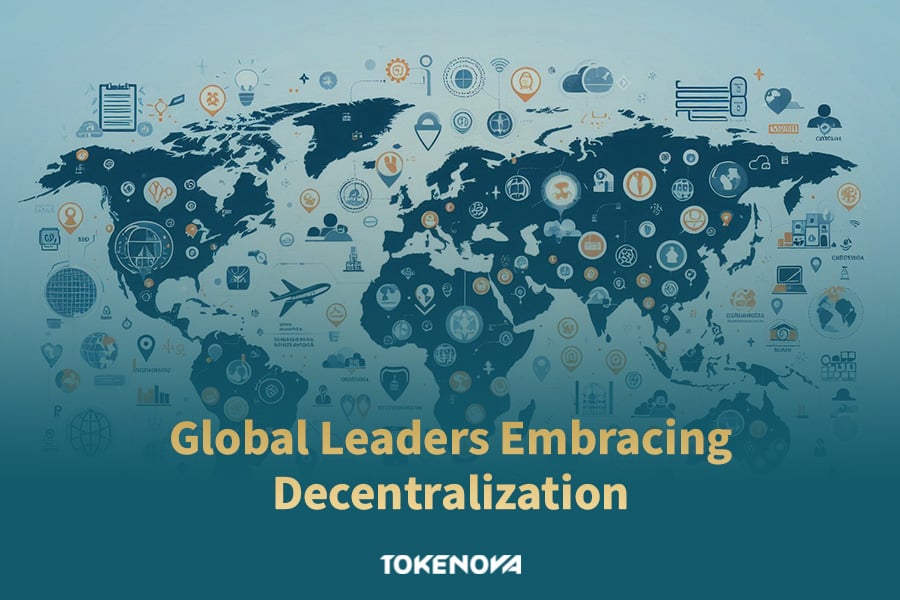
Holacracy and Self-Managing Teams
Holacracy is one of the most formalized models of decentralization. This approach replaces traditional hierarchies with self-managing teams or “circles,” where authority is distributed according to clearly defined roles rather than fixed job titles. Companies like Zappos have adopted Holacracy, resulting in significantly reduced decision latency and enhanced operational flexibility. The successful implementation of self-managing teams demonstrates that decentralization, when supported by robust frameworks of accountability, can lead to substantial efficiency gains and improved employee empowerment.
Geographic Decentralization in Global Enterprises
Multinational companies increasingly adopt geographic decentralization to better cater to local markets while maintaining global coordination. For example, telecommunications conglomerates operate across diverse regions by granting significant decision-making authority to regional units. A notable case is e&, which successfully balances global oversight with local autonomy, thereby mitigating risks associated with currency fluctuations and varying market conditions. This strategy not only increases market responsiveness but also helps manage regional complexities more effectively.
Financial Services Decentralization
The financial sector has undergone a dramatic transformation through the rise of decentralized finance (DeFi) platforms. Traditional centralized banking models are being challenged by decentralized systems that offer faster, more accessible financial services. DeFi platforms reduce reliance on intermediaries and lower transaction costs, thereby enhancing liquidity and market inclusivity. The emergence of security tokens within this landscape is a prime example of how decentralization is reshaping financial markets. By tokenizing traditional assets, these platforms enable fractional ownership and democratize access to investment opportunities.
Read More: Future of Decentralized Finance: The Upcoming Financial Revolution
Technology Enablers of Decentralization
Technological innovations are the backbone of modern decentralization. This section explains how digital infrastructures and emerging technologies like AI, blockchain, and automation are transforming the way decentralized operations are managed and executed.
Digital Infrastructure for Coordination
Robust digital infrastructures are essential for the smooth functioning of decentralized organizations. Cloud-based collaboration tools, enterprise social networks, and shared data platforms ensure that information flows seamlessly across various units. These systems help maintain a consistent level of data quality, which is critical for effective decision-making at the local level. By leveraging these tools, organizations can overcome traditional coordination challenges and foster a more integrated decentralized structure.
AI and Automation in Decentralized Operations
Artificial intelligence (AI) and automation are revolutionizing decentralized operations by streamlining routine tasks and providing critical decision support. For example, Careem uses AI-driven logistics to automate tasks such as route optimization, enabling real-time adjustments that significantly reduce delivery times. This use of automation not only improves operational efficiency but also frees up human resources to focus on more complex and strategic issues, thereby enhancing the overall performance of decentralized systems.
Blockchain and Decentralized Business Models
Blockchain technology is perhaps the most transformative enabler of decentralization. Its inherent qualities of transparency, security, and immutability make it ideal for managing distributed systems. One of the most compelling applications of blockchain in finance is the creation of security tokens. These tokens represent ownership in real-world assets or financial instruments and are transforming the way assets are managed and traded. By leveraging blockchain, security tokens facilitate fractional ownership, improve liquidity, and provide greater market accessibility—all while reducing reliance on traditional intermediaries.
Read More: Tokenization and Smart Contracts: Transforming Finance
Security Tokens: A Case Study in Financial Decentralization
Security tokens are a groundbreaking example of how blockchain technology is reshaping financial markets. They offer a decentralized way to represent ownership in various assets, ranging from equity and debt to real estate. This tokenization enables broader market participation by lowering entry barriers and increasing liquidity.
The following table provides a comparative overview of different security token types and their key attributes:
| Token Type | Example Token | Description | Platform | Key Features |
| Equity Tokens | Blockchain Capital (BCAP) | Represents venture capital fund interests in blockchain startups | Ethereum | Voting rights, dividend distributions, profit sharing |
| SPiCE VC (SPICE) | Offers equity in early-stage ventures with tokenized liquidity | Ethereum | Fractional ownership, distribution of net exit revenues | |
| Debt Tokens | Aspen Coin | Tokenizes real estate debt, providing fixed income from property operations | Various | Fixed interest, clear repayment terms |
| ArborCrowd Token | Represents ownership in commercial real estate debt | Various | Liquidity and fixed return benefits | |
| Asset-Backed Tokens | tZERO | Facilitates trading of tokens that represent diverse asset classes | Multiple | Revenue sharing, diversified asset exposure |
| RealT | Tokenizes rental properties for fractional real estate ownership | Multiple | Low entry barriers, rental income potential | |
| Real Estate Tokens | AspenCoin (Real Estate) | Fractional ownership of real estate assets | Multiple | Democratizes property investments, increased liquidity |
The emergence of security tokens exemplifies how decentralization is transforming asset management and financial operations. By integrating blockchain into traditional financial models, these tokens are democratizing access to investments and paving the way for a more decentralized financial future.
Read More: How Tokenization in Real Estate Enhances the Way We Buy and Sell Properties
The Future of Decentralized Business Management
Looking forward, the landscape of business management is poised for further transformation as decentralized systems become increasingly prevalent. This final section explores emerging trends and technologies that are shaping the future, with particular emphasis on how innovations like Web3 and security tokens are set to redefine business models.
Web3 and the Decentralized Economy
Web3 represents the next frontier in decentralization, offering a vision of an internet where users control their own data and assets without relying on centralized platforms. The global Web3 market, valued at USD 2.18 billion in 2023, is projected to grow to roughly USD 104.04 billion by 2032—a compound annual growth rate of 46%. This explosive growth highlights the potential for decentralized systems to transform economic activities across various industries.
The adoption of Web3 is particularly promising in regions where traditional centralized institutions have struggled to meet modern digital demands. As businesses and consumers increasingly embrace these decentralized technologies, the role of security tokens in facilitating seamless and inclusive financial transactions is likely to expand, ushering in a new era of digital asset management.
Read More: Top Web3 Business Ideas: Your Launchpad to Success
Evolving Leadership for Decentralized Organizations
As organizations move toward decentralization, leadership styles must adapt. Traditional top-down leadership is giving way to models that emphasize empowerment and facilitation. In decentralized environments, leaders are tasked with setting a strategic vision and enabling autonomous teams rather than controlling every operational detail.
For instance, companies like e& have shifted their leadership focus from day-to-day management to fostering innovation and strategic direction, relying on digital tools and AI to handle routine operations. This evolution in leadership is critical for sustaining the benefits of decentralization in an increasingly complex and competitive business environment.
Hybrid Work and Distributed Teams
The rise of remote and hybrid work models is a natural extension of decentralization. As organizations adopt distributed workforces, they face new challenges in collaboration, culture-building, and performance management. Hybrid work models not only reduce overhead costs but also empower employees by allowing them to work from locations that best suit their needs.
The integration of advanced collaboration platforms and blockchain-based tools further enhances the ability of decentralized teams to work seamlessly across geographical boundaries. This shift is transforming traditional human resource policies and paving the way for more agile and responsive organizational structures.
Conclusion
Decentralized business management is transforming organizational efficiency and innovation in today’s digital economy. By leveraging technologies such as blockchain and AI, and integrating breakthrough concepts like security tokens, companies can balance local autonomy with strategic cohesion. This hybrid approach promises enhanced agility, improved resource allocation, and broader market access—setting the stage for sustainable growth in an ever-changing business landscape.
Embracing decentralization redefines asset ownership and financial operations, fostering a resilient, innovative culture that can adapt to dynamic market conditions. As the digital revolution continues, the integration of security tokens and decentralized practices will be key to unlocking new levels of organizational success.



